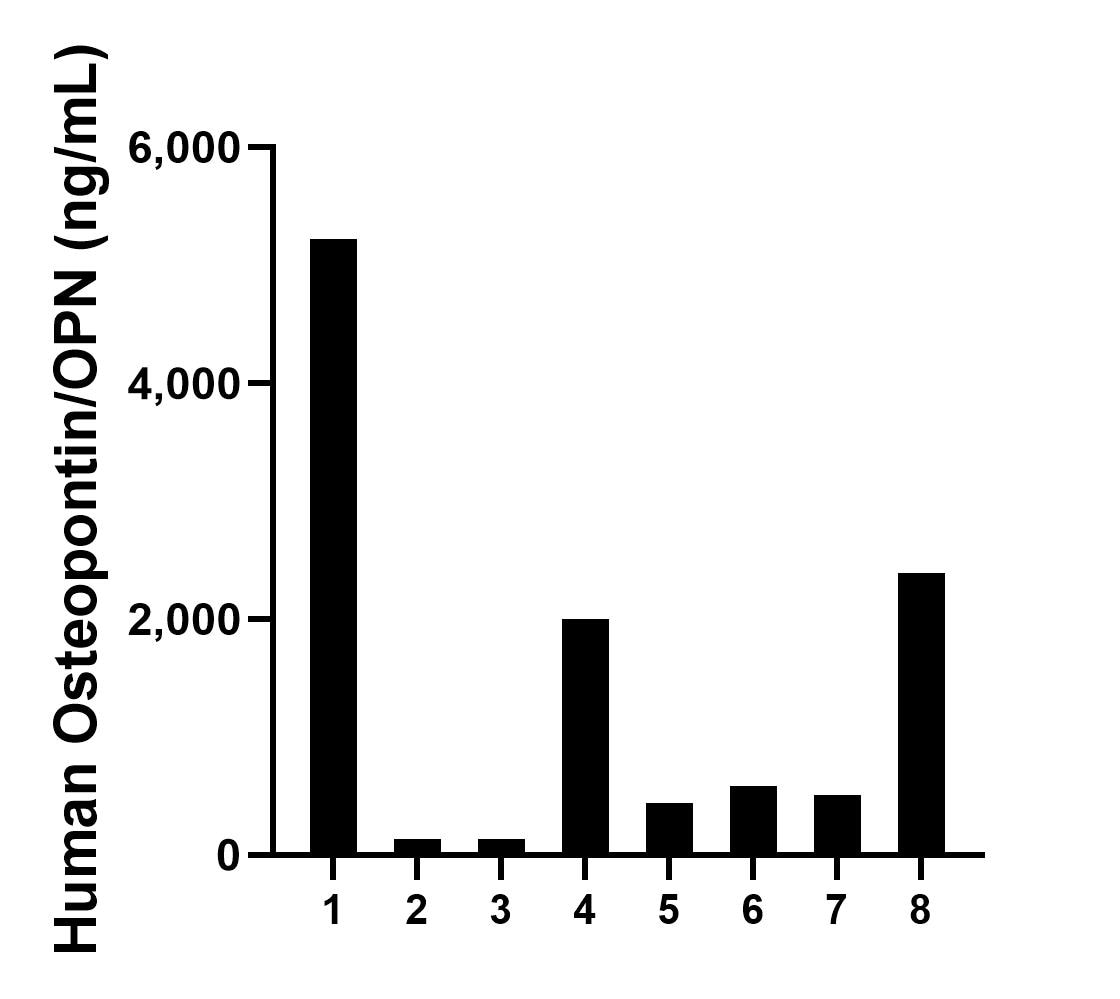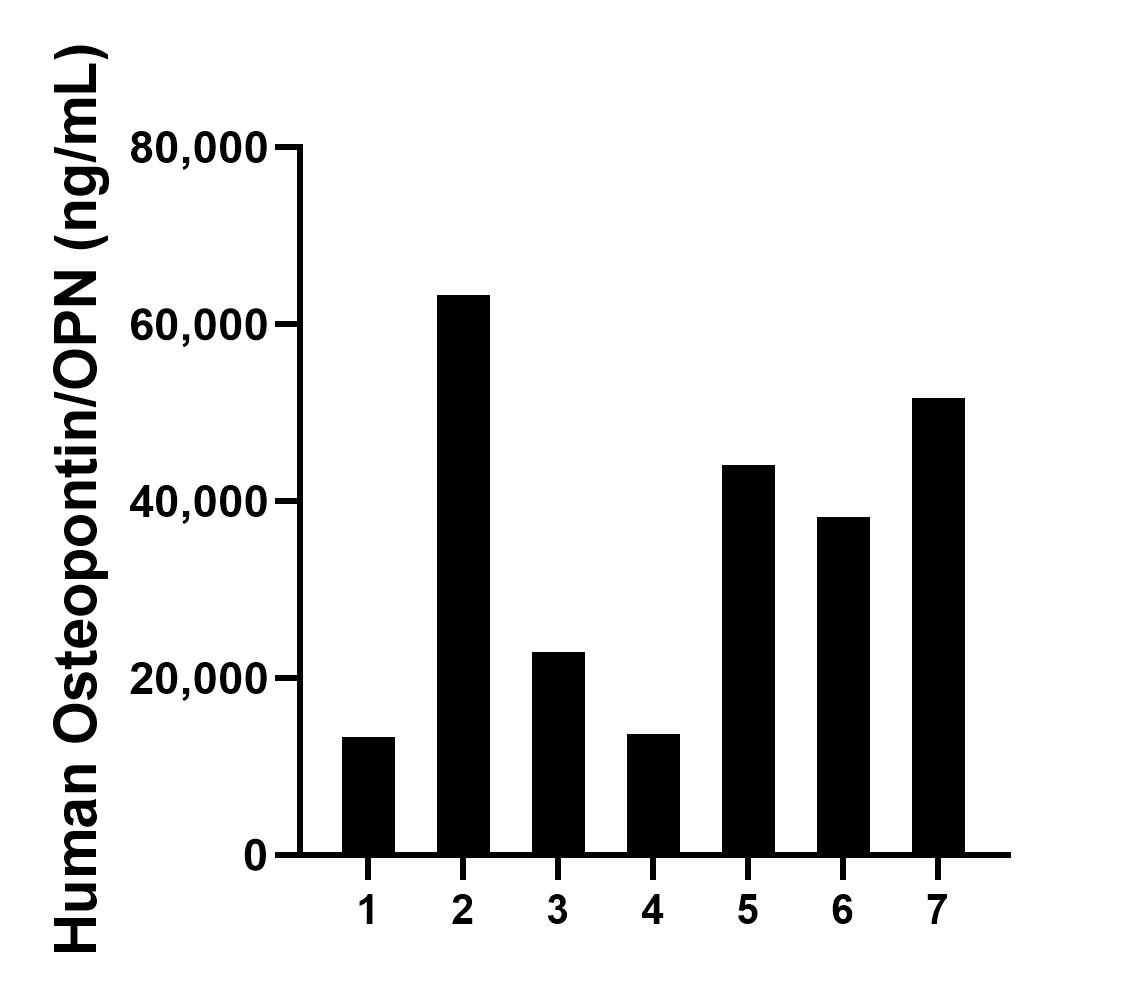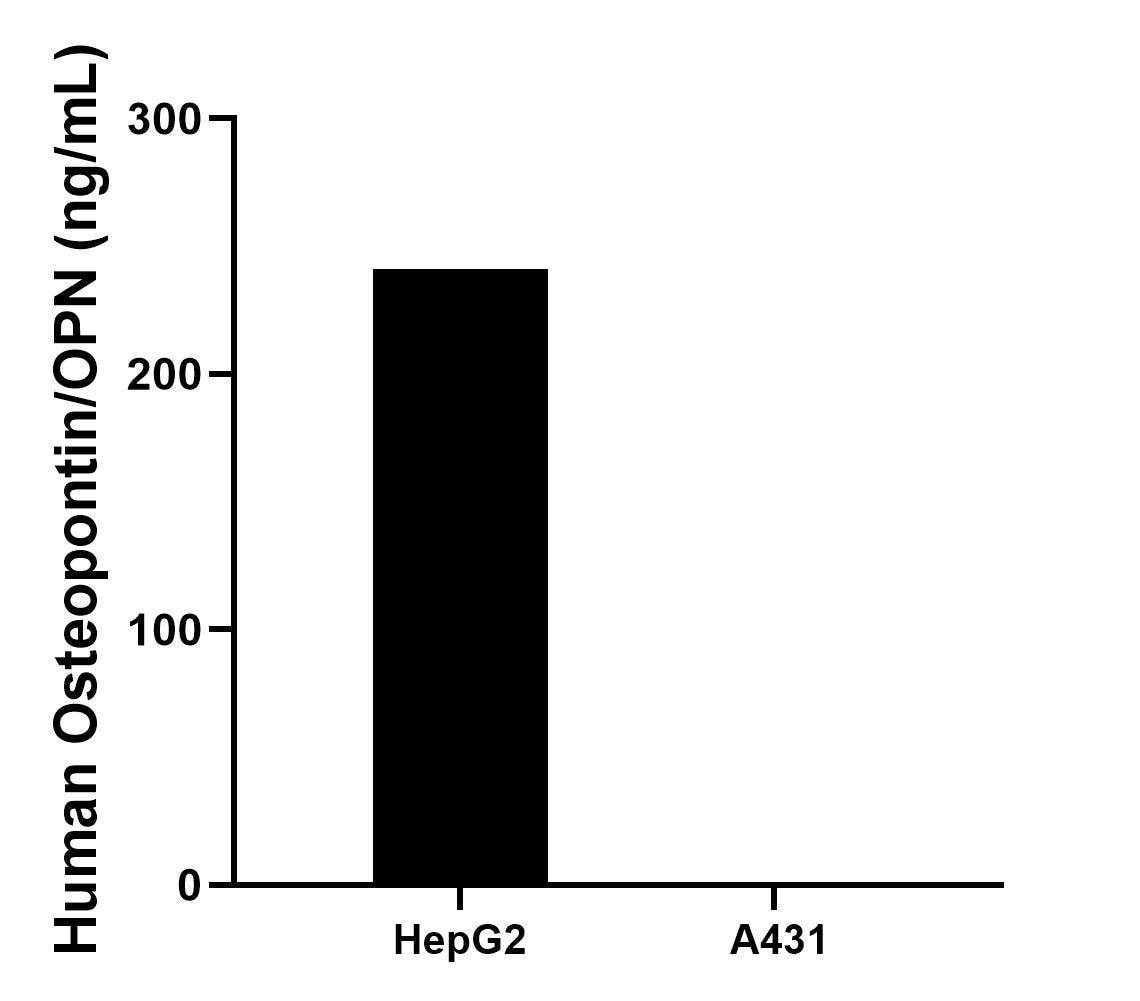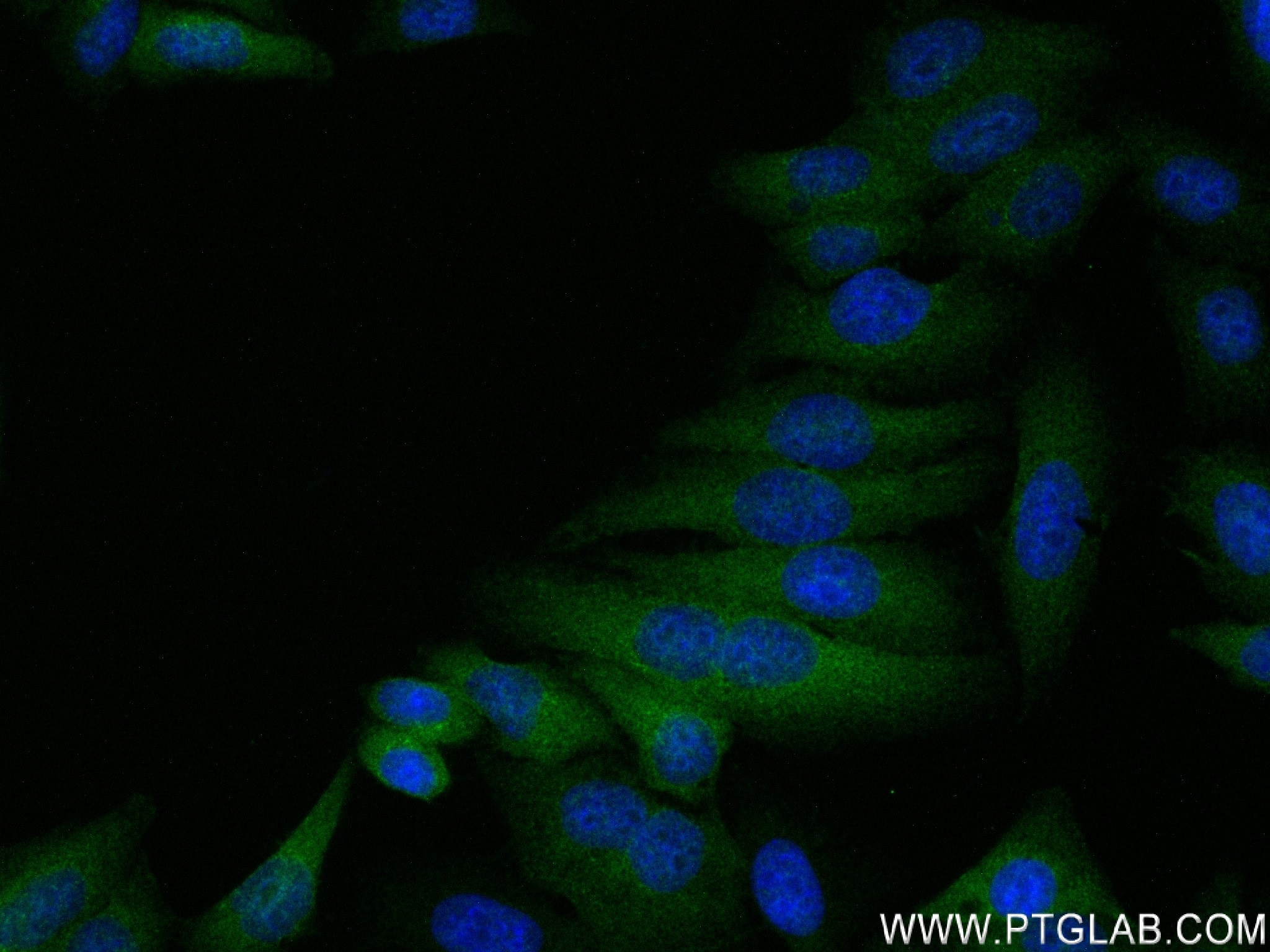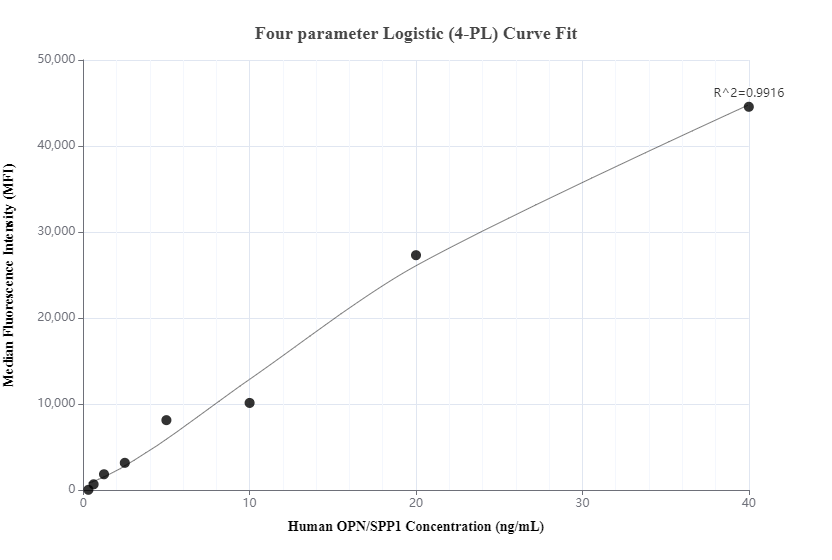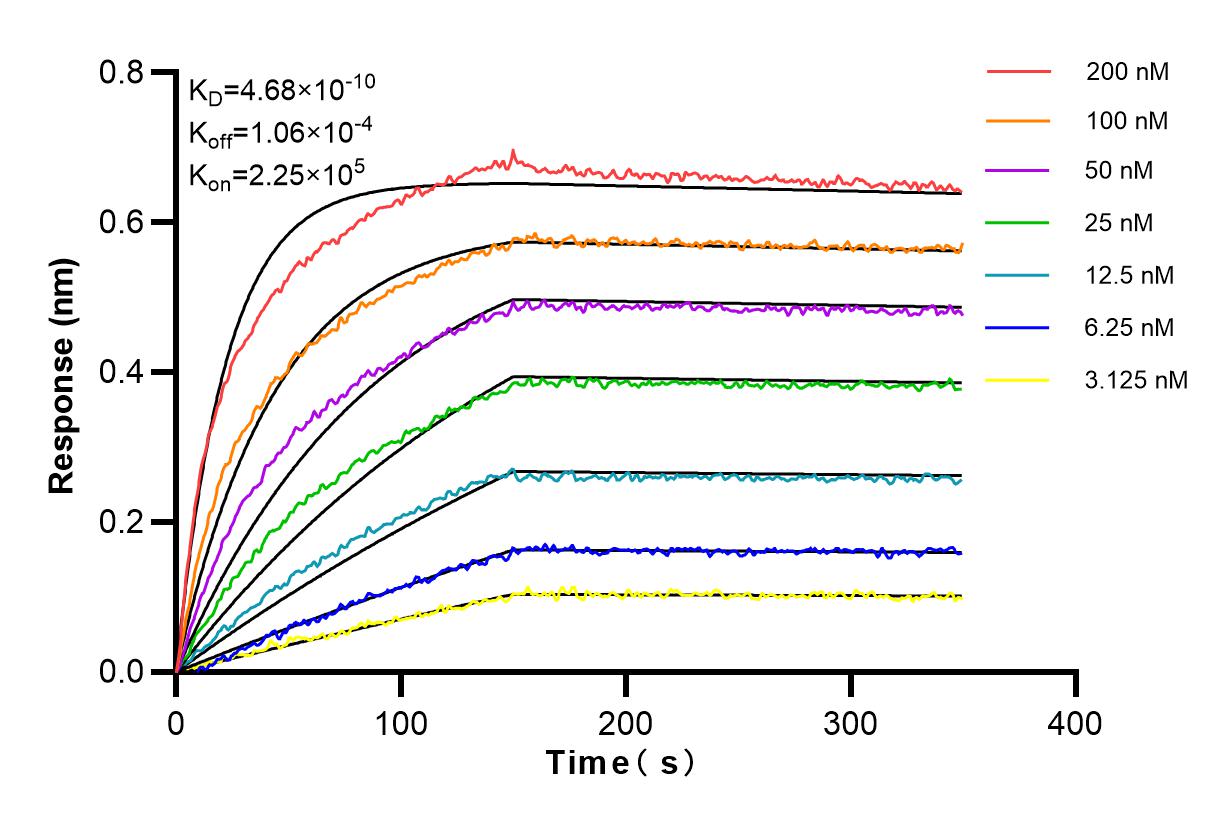Osteopontin Rekombinanter Antikörper
Osteopontin Rekombinant Antikörper für IHC, IF/ICC, Cytometric bead array, Sandwich ELISA, Indirect ELISA, Sample test
Wirt / Isotyp
Kaninchen / IgG
Getestete Reaktivität
human, Maus
Anwendung
IHC, IF/ICC, Cytometric bead array, Sandwich ELISA, Indirect ELISA, Sample test
Konjugation
Unkonjugiert
CloneNo.
240206B7
Kat-Nr. : 83341-2-PBS
Synonyme
Geprüfte Anwendungen
Produktinformation
83341-2-PBS bindet in IHC, IF/ICC, Cytometric bead array, Sandwich ELISA, Indirect ELISA, Sample test Osteopontin und zeigt Reaktivität mit human, Maus
| Getestete Reaktivität | human, Maus |
| Wirt / Isotyp | Kaninchen / IgG |
| Klonalität | Rekombinant |
| Typ | Antikörper |
| Immunogen | Osteopontin fusion protein Eg0754 |
| Vollständiger Name | secreted phosphoprotein 1 |
| Berechnetes Molekulargewicht | 314 aa, 35 kDa |
| GenBank-Zugangsnummer | BC007016 |
| Gene symbol | Osteopontin |
| Gene ID (NCBI) | 6696 |
| Konjugation | Unkonjugiert |
| Form | Liquid |
| Reinigungsmethode | Protein-A-Reinigung |
| Lagerungspuffer | PBS only |
| Lagerungsbedingungen | Store at -80°C. 20ul Größen enthalten 0,1% BSA. |
Hintergrundinformationen
Osteopontin (OPN), also known as SPP1, is a secreted glycophosphoprotein that belongs to the small integrin-binding ligand N-linked glycoprotein (SIBLING) family. Originally isolated from bone, OPN has been found in kidneys, vascular tissues, biological fluids, and various tumor tissues (PMID: 15138464; 16406521). OPN can interact with CD44 and integrins and regulate diverse biological processes. It has a multifaceted role in bone development and remodeling, and is also involved in the inflammatory and immune response, oncogenesis and cancer progression. The very acidic nature of OPN, as well as the presence of variable posttranslational modifications, has led to anomalous migration in SDS-polyacrylamide gels and therefore to reports of different molecular weights for OPN (PMID: 8293561). Depending on the cell and tissue source and/or the SDS-PAGE system, OPN migrates with a molecular weight of 44-80 kDa, as well as at some smaller bands corresponding to peptide fragments (PMID: 8195113; 17890765).


